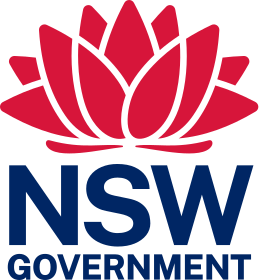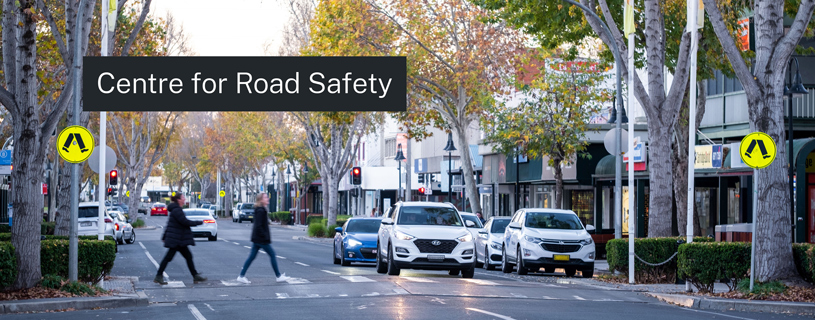
Learner drivers
Learner licence conditions
- You must be supervised by someone with a full (unrestricted) driver licence.
- If you're under 25 years old, you need to complete 120 hours of supervised driving (which includes 20 hours at night).
- You must not drive faster than 90km/h, even when there is a higher speed limit.
- If you’re caught speeding, you'll exceed your demerit point limit and lose your licence for at least 3 months.
- You must not use a mobile phone. If caught using a mobile phone illegally, you'll exceed your demerit point limit and have your licence suspended for 3 months.
- You can’t tow a trailer or any other vehicle and must not drive any vehicle that's being towed.
NSW learner drivers and riders must obey the same licence conditions and restrictions that apply to them in NSW when they drive or ride in other states or territories in Australia. This ‘home conditions’ rule also applies to novice drivers and riders around Australia when they drive or ride in other states or territories.
Displaying L plates
You must clearly display your L plates on the front and back of the outside of your vehicle – the letters must not be hidden.
Zero blood alcohol
All learner drivers must have a zero blood alcohol concentration. Learner licence holders can’t consume any alcohol before driving. If you have a big night out, you may still be over the zero limit the next day.
Mobile phones
Learner drivers are not allowed to use any function of a mobile phone while driving. This includes phones in the hands-free mode, with the loudspeaker on, using GPS navigation or sending text messages.
The only instances where you can legally use your mobile phone are to:
- show your Digital Driver Licence after being asked to do so by police
- use wallet functions (when stopped and on a road-related area such as in a car park, driveway or drive-thru).
Getting your driver licence
The Graduated Licensing Scheme (GLS) is the process you follow to go from your L plates to a full driver licence. The scheme prepares you to be a safe and low-risk driver through a staged approach.
You'll be tested on your:
- understanding of road rules and safety
- ability to recognise potential road hazards
- driving skills, decision making, awareness of other road users and how you share the road.
Find out more on the NSW Government website.
Know the road rules
The Road User Handbook covers the main road rules to drive and stay safe on our roads. It will also help you prepare for all the tests in the Graduated Licensing Scheme.
To get your learner licence, you'll need to pass the Driver Knowledge Test (DKT).
Learn more about the DKT on the NSW Government website and take practice tests to help you prepare.
Safer Drivers Course
The Safer Drivers Course helps you develop safe driving skills before you move to P plates.
You’ll learn practical skills around risk management, hazard awareness, following distances and safe driving behaviours with peers. You’ll also earn an extra 20 hours of log book credit when you complete the course. The course has been designed for a learner to attend once, so the 20 hours of bonus log book credit will only be deducted once.
If you also take 10 hours of structured driving lessons with a professional driving instructor, you'll receive a further 20 hours of credit on top of the 10 hours you drive during those lessons.
| Credit | Supervised driving hours | Log book total |
Safer Drivers Course | 20 hours | 100 hours | 120 hours |
10 hrs of professional lessons | 20 hours* | 100 hours | 120 hours |
Safer Drivers Course and 10 hours professional lessons | 40 hours | 80 hours | 120 hours |
*This is in addition to the 10 hours spent driving during the lessons. Professional lessons totalling more than 10 hours won't provide additional credit.
To complete a course, you must be on your L plates, be under 25 and have completed at least 50 log book hours of driving.
Free course for disadvantaged learner drivers
Each year, there are 1000 free places offered for people from disadvantaged backgrounds and Aboriginal communities. To be eligible for a free place you must:
- hold a valid learner licence
- be under 25
- have completed at least 50 log book hours of actual on-road driving (excluding any 3-for-1 bonus hours) including night driving.
- hold a current Health Care Card or Pensioner Concession Card issued by Centrelink or have been or are currently in Out of Home Care (OOHC)
- be a current or former participant of a Driver Licensing Access Program (DLAP).
To apply for a free place, you need to enrol with a course provider and attach your application form with supporting documents.
Safer Drivers Course FAQs
Will I need to supply my own vehicle for the in-vehicle coaching part of the course?
No. Your course provider will supply a dual-controlled vehicle.
What's the maximum number of participants for a course to be held?
Module 1 (the group discussion) will be run by a facilitator and the maximum number of participants is 12. Module 2 (the in-vehicle coaching session) will be delivered by a coach with two learner drivers.
Do I have to complete the course modules in a set order?
Yes, you must complete module 1 (the facilitated group discussion) before completing module 2 (the in-vehicle coaching). You should complete module 2 within one month of module 1.
What happens if a learner driver only completes module 1?
The 20 log book hours will only be credited if you have completed both course modules within four weeks. Contact the course providers directly to learn more about their cancellation/re-booking policies.
Can I receive a refund or partial refund for the course?
Course providers must tell all participants about their cancellation/refund policy at the time of their booking. Contact your course providers directly to learn about these policies.
Can I fail the course?
No. There's no assessment or pass/fail component of the Safer Drivers Course. However, you must complete both course modules to get the 20-hour credit in your learner driver log book.
How will the 20 hours credit be recorded in my log book after I complete the course?
As you complete each module, the facilitator or coach will enter the details and sign off the course completion in your log book on page 110, ‘Structured Lesson Record Keeper and Safer Drivers Course Record’. Also, the driving coach will enter 20 hours credit in the ‘Driver Experience Record’ section of your log book so you can keep an accurate running total of your log book driving hours.
What if I have an issue or complaint about one of the course providers or their staff?
You must first advise a course provider if you’re unhappy with the service or want to make a complaint about a facilitator/coach.
If you’re unsatisfied with this process, you can lodge a formal complaint about a course provider by emailing saferdriverscourse@transport.nsw.gov.au or calling 13 22 13.
Find out more about Safer Drivers Course providers.
Driver Licensing Access Program
If you're finding it hard to get a driver licence, look into the free Driver Licensing Access Program (DLAP).
DLAP provides free culturally appropriate support to people in NSW who face challenges in getting a licence. The challenges can impact access to employment, education, training, health care, family, community support and cultural activities.
Program benefits
DLAP aims to keep everyone on the road safe, increase mobility, and improve licensing access for communities who may be disadvantaged.
This includes helping you with:
- understanding road rules and staying road safe.
- literacy, numeracy and computer skills to prepare for licence tests.
- licence enrolment, for example identification documents.
- interacting with Service NSW and other government agencies.
- on-road driving supervision, mentoring, and coaching.
- access to roadworthy vehicles.
- managing fine debts to allow you to get your licence.
Apply for this program if you want to:
- get a learner licence
- gain on-road driving experience
- progress to a provisional licence
- regain a licence.
Those eligible
- Aboriginal communities.
- Refugee and resettlement communities.
- Communities who have limited access to transport options or who are geographically disadvantaged.
- Vulnerable young people.
- Other people experiencing social and economic hardship.
Image
Image controls:
To apply:
Get in touch with a DLAP service provider near you to get started.
The service provider will assess and confirm if you're eligible, then let you know how they can support you.
Information for referring agencies
When you refer someone to a DLAP service provider, the provider will need to first assess the person's needs and eligibility.
The service provider will then let you and the referred person know if they've been accepted into the program.
Contact a service provider directly.
If you need assistance, contact a project officer from the Transport for NSW Aboriginal Engagement team in your region.
3 for 1 structured lessons with a driving instructor
In addition to general driving supervisor lessons (with a parent/carer), you may wish to find a licensed NSW driving instructor to have structured lessons that allow you to record bonus hours in your logbook.
Under the 3 for 1 scheme, for every 1-hour structured lesson, you can log 3 hours of driving practice in your log book.
3 for 1 lessons must:
- Use a NSW licensed driving instructor – the 3 for 1 bonus hours only apply when you drive with instructors who are licensed in NSW. If the instructor doesn’t hold a NSW instructor licence, you cannot log the extra driving time.
- Align with principles in the log book - to be eligible for 3 for 1 bonus hours, each structured lesson with an instructor must aim to develop your skills according to the principles in your log book.
- Occur during day-light hours – if you have a driving lesson at night, the bonus hours do not count towards your ‘night driving hours’ in your log book. They can only count as daytime driving hours.
Applying bonus hours
- A maximum of 10 structured lessons can be claimed. This means that you can only log up to 20 bonus hours.
- There is no limit to how many lessons you can have with a driving instructor. There is only a limit on the number of bonus hours you can log for those lessons (i.e. no more than 10).
Driving instructor standards
The Driving Instructors Act has strict standards that driving instructors must meet. This is to protect you and the community, and to benefit the driving instruction industry.
If you think someone has breached this Act, make a report by phoning us on 13 22 13.
Log books
If you’re under 25, you'll need to log 120 hours of supervised driving (including 20 hours of night driving). You must log these hours before you can take a driving test to get your P1 licence.
You can reach the 120 hours faster if you complete:
- the NSW Safer Drivers Course and earn an extra 20 hours of log book credit.
- structured lessons with a driving instructor and earn 3 hours of log book credit for every 1 hour lesson.
Paper or digital log books
If you don't want to use a paper log book, there are currently three free log book apps that are accepted by Transport for NSW (Transport) and Service NSW.
Please note: Transport for NSW is moving to a single log book app model with Roundtrip being the only official app moving forward.
If you are a new learner driver, please use the Roundtrip app.
Download the latest version for Apple iOS and Android phones.
If you are an existing app user, please refer to the information below regarding your app.
L2P learner log book
From 29 February 2024 L2P will no longer be accepted by Transport for NSW as an official app for submitting learner log book hours.
If you are currently using the L2P app and are unable to submit your log book by this date, your hours can be transferred into a paper log book by Service NSW.
To transfer hours:
- Visit a Service NSW Centre with the paper log book you were issued. If you no longer have a log book, the service centre will supply you with one at no extra cost
- Bring a PDF export of your hours from the app of your driving record, OR
- If you experience difficulties exporting your hours as a PDF, bring your device with the L2P app which shows your completed hours. You may also need to provide evidence of completed learning goals and credited Safer Driver Course hours if applicable.
The service centre will transfer your completed hours into the log book for you.
You may then continue to add your hours in the paper log book.
If you need more support, please contact 13 77 88 or alternatively you can visit your local Service NSW Centre.
Licence Ready learner log book
If you are an existing Licence Ready user, you can continue to use the app to log your hours until further notice. Be assured any hours logged in the Licence Ready app will not be lost.
Roundtrip learner log book
New users can download the latest version for Apple iOS and Android phones.
Existing users can continue to log hours in the app. There is no change or further action required.
The app helps calculate your 120 driving hours and ensure you've completed the 20 learning goals.
You can’t use a mobile phone while driving, so all these apps let you set and forget and will record your drive in the background.
Find out more on the NSW Government website.
If you’re 25 years or over, you don’t need to log driving hours, but more supervised driving will help build your skills and experience.
Ready for a P1 licence
Hazard Perception Test
You have to pass the Hazard Perception Test (HPT) before you take a driving test and apply for your P1 licence. The HPT ensures you can recognise potentially dangerous situations on the road when you drive solo.
Hazard Perception Handbook
Prepare for the test with the Hazard Perception Handbook and put the theory into practice when driving.
Driving test
The Driving Test is the final step to go from your learner licence to a P1 licence.
The Driving Test is a practical on-road test that focuses on your ability to perceive hazards and respond to them. A testing officer assesses your driving skills, decision making, awareness of other road users and how you share the road.
Visit the NSW Government website to see if you're eligible to take the Driving Test and for information on what to do on the day.
Driving test guide
In addition to real driving experience, you can refer to the driving test guide to prepare for what you may be tested on.
For more information
Getting your driver licence
What are the steps to getting a NSW driver licence? Here's what you need to know, from getting your learner licence to a full licence.
Road User Handbook
The Road User Handbook covers the main road rules to drive and stay safe on our roads.
Driver Knowledge Test (DKT)
The Driver Knowledge Test is the first step in getting your driver licence.
P1 & P2 drivers
The P1 licence allows you to drive unsupervised. You must hold a P2 licence for at least 2 years before you can apply for a full licence.
Safer cars for country kids
Higher standards of vehicle safety are vital in the campaign to reduce the road toll and make driving safer on NSW roads.


